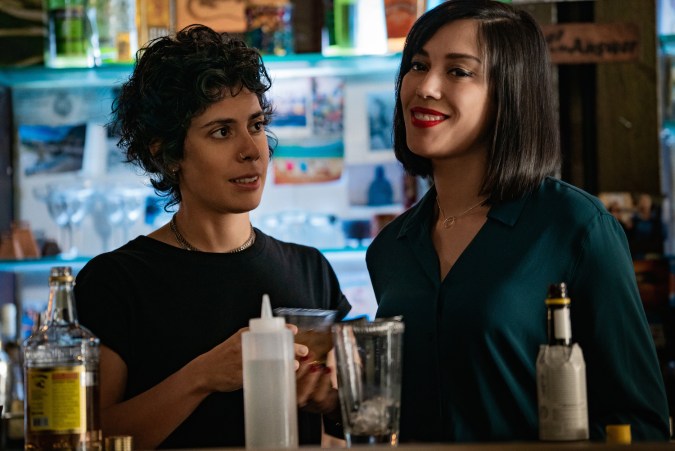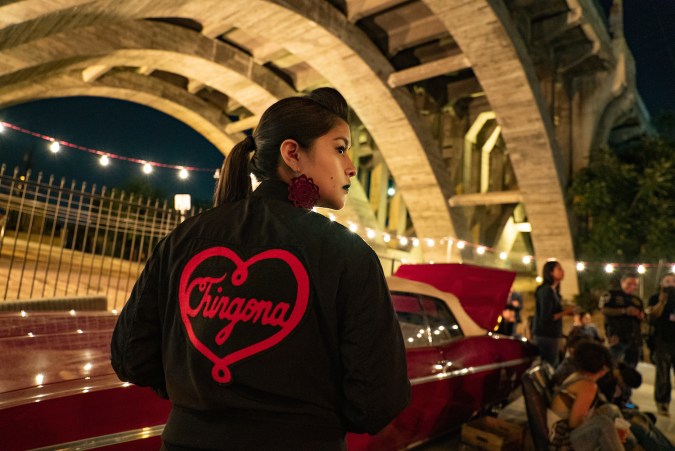Starz’s critically acclaimed series Vida is back for season two and viewers get to catch up on where the Hernandez sisters left off. As Emma (Mishel Prada) and Lyn (Melissa Barrera) take on their commitment to rebuilding their deceased mother’s building and adjoining bar, their own self-discovery and the notion of building a new life in an unfamiliar home takes center stage.
In season one, Doña Lupe tells Lyn that her true love is bigger than a man, her true love is at home. Of course, Lyn mistakes this as her love for Johnny (Carlos Miranda) but nonetheless, season two’s trailer promises to intensify the connection between the sisters and what they love the most — home.
Overarching themes of love, home, and self-discovery are nothing new. They’ve been played out numerous times, on big and small screens, with each version feeling eerily similar to the last. What makes Vida unique and so binge-worthy is that it’s told from the perspective of a mostly Latinx creative team.
“It’s our gaze,” shared Prada in an interview with Remezcla. “That’s important. Why it’s taken so long to get here, I don’t know. But I’m glad that we’re here, and I’m glad that we’re making these movements.”
With a Mexico-born, borderland-raised showrunner Tanya Saracho, to the all-Latinx writer’s room, Latinx cast, and (in season two) all Latina directors, Vida manages to tell a specific story in a way that maintains a universal appeal. “It feels like the correct way to do it,” acknowledged Barrera, “it doesn’t feel like a stretch.”

Indeed, since the unceremonious cancellation of Netflix’s One Day at a Time, there’s an even bigger void in the Latinx perspective on the small screen. Latinx audiences are growing increasingly impatient with cookie-cutter stereotypes that inform the storytelling when there is no diversity in the writers’ room. From day one, Saracho knew that the story of the Hernandez sisters couldn’t be told unless it was from a very specific cultural vantage point.
Saracho was mindful in taking the otherness of being Latinx and queer and normalizing it, telling a story that is so rich with nuanced detail that it feels extremely personal. “I’m sort of like a helicopter mom,” Saracho told Remezcla. “I’m the keeper of that aesthetic. I’m the keeper of the mission and how it [the show] sounds and how it looks.”
From the dialogue, to the set, and even the lighting, each scene is curated to be a respectful depiction of the neighborhood in which the story takes place, one that’s based on Los Angeles’ Boyle Heights. “Everyone is on the same page of where we’re coming from culturally,” notes Roberta Colindrez, whose character Nico joins the bar staff in season two.
To build upon this blueprint, Spanglish is deliberately written into the show and treated like a main character, not an afterthought. “It’s such an art form,” says Saracho. “It’s so specific for this neighborhood. I’m not from this area, but we have writers in the room who are from the area. The way it sounds is so important. We start with it, in episode 101, we say the word pocha and we explain what it is, as much as Vida is ever going to explain, and I’ve never heard the word pocha before on television. It’s so specific. I’m very excited that we got to explore the notion of pochismo.”

Saracho and her team of writers are open to being questioned about keeping each character’s dialogue real. Explains Miranda, “There was one line where I felt like, ‘I don’t think Johnny would say this,’ and they tweaked it to make it work.” There’s an understanding that the dialogue not only has to be specific to the neighborhood but also for each character as well.
Having a Latinx team involved in all levels of the process has fostered a familiar comfort among cast members that allows them the freedom to fully explore their story arcs. “It’s such great support, as an actor, to be able to deliver the emotional journey for my character,” boasts Ser Anzoategui, who — in the new season — shares a powerful and emotional scene with Colindrez.
A deep exploration of Latinx and queer culture is a first for a U.S.-based television show and it hasn’t gone unnoticed by the cast. Chelsea Rendon emphasizes, “There is an unspoken understanding [within the cast and crew] that I’ve never seen before.” It’s this understanding that dismantles outdated Latinx and queer stereotypes and, with any luck, can positively influence other networks and showrunners to make a commitment to authentic Latinx narratives.
Interviews conducted by Remezcla’s film and TV editor, Vanessa Erazo.
Vida season 2 drops May 23 on the Starz app. Its broadcast premiere is May 26 at 8 p.m.




